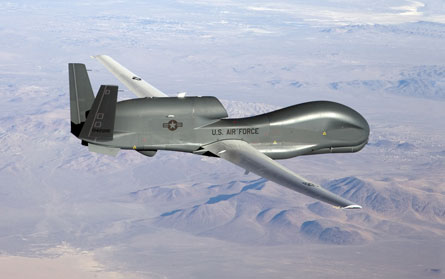Northrop Grumman has decided an all-new radar will be needed as part of a four-sensor package to solve the sense-and-avoid problem for unmanned aircraft systems, starting with its own high-altitude RQ-4 Global Hawk.
A specialised airborne radar featuring higher refresh rates and reduced size, weight and power requirements compared with current models is needed for the sense and avoid solution, says Won Zon Chen, a Northrop technical fellow.
Chen declines to name specific candidates for the emerging radar requirement, but at least one has appeared in recent weeks.
 |
|---|
© USAF |
The US Air Force Research Laboratory has launched development of the pilot electronic eyes radar (Peer) specifically for the sense and avoid application, awarding a nearly $150,000 contract to Syracuse Research on 4 August. Syracuse declines to comment about the project and AFRL officials have not responded to questions. Chen acknowledges that he is aware of the Peer project after being informed that it had been already announced to the public by AFRL.
Peer could become the key sensor in Northrop's emerging sense and avoid suite, which also includes an electro-optical camera, automatic dependent surveillance-broadcast transponder and traffic collision avoidance system.
In late April, Northrop performed live calibration testing using a surrogate Calspan Bombardier Learjet and a surrogate ICX Radar Systems AI-130 radar. Another week-long series of flight tests using the Learjet is scheduled for November, when Northrop will integrate the sensors and fuse the incoming data into a common picture. Two "intruder" aircraft will be used to test the system's ability to detect and manoeuvre to avoid the incoming traffic.
The USAF wants to install a sense and avoid sensor package on its Global Hawk fleet in the near future. Northrop believes the payload can also be scaled down for smaller UAS types, including its MQ-5B Hunter and RQ/MQ-8 Fire Scout helicopter.
Source: Flight International























